PakAlumni Worldwide: The Global Social Network
The Global Social Network
Growing Tourism and Travel Industry in Pakistan
Pakistan's travel and tourism industry is booming with significant improvement in security situation. In 2015, it contributed 7% of Pakistan's GDP. It includes foreign and domestic travel and tourism spending or employment in the equivalent economy-wide concept in the published national income accounts or labour market statistics.
There are are multiple indicators showing this industry will contribute more this year. Growth in air travel and hotel occupancy are among the top indicators of travel and travel and tourism industry growth.
Hotel Occupancy:
“The rate of hotel occupancy has surged to 80% across the country compared to 35% before the current calendar year started,” said Beach Luxury Hotel Director Business Development Rehan Wahid, according to report in the Express Tribune newspaper. “Hotels in Islamabad and Lahore are fully booked most of the days. However, this is yet to happen in Karachi,” he said.
Thanks to the ramp-up of China-Pakistan Economic Corridor (CPEC) related projects, Gwadar is leading the way for new hotel construction with permits issued for least 5 new 5-star hotels so far in the new port city. These include a 250-room hotel apartment project of the management of Pearl Continental Hotels and another one of the Bahria Group. Gwadar Airport growth of 73% was the fastest of all airports in Pakistan.
Air Travel:
Pakistan air travel market is among the fastest growing in the world. IATA (International Air Transport Association) forecasts Pakistan domestic air travel will grow at least 9.5% per year, more than 2X faster than the world average annual growth rate of 4.1% over the next 20 years. The Indian and Brazilian domestic markets will grow at 6.9% and 5.4% respectively.
Pakistan saw 23% growth in airline passengers in 2015, according to Anna Aero publication. Several new airports began operations or expanded and each saw double digit growth in passengers. However, Gwadar Airport growth of 73% was the fastest of all airports in Pakistan.
The top 12 airports all saw large double digit increases. Multan grew 64%, Quetta 62% and Faisalabad +61% all climbing one place as a result of all of them seeing a growth of over 60%. Turbat Airport in Balochistan is the newest airport to reach the top 12 in terms of traffic.
Security Situation:
The key reason for travel and tourism boom is significant improvement in the security situation since the launch of Pakistan Army anti-terror campaign called Zarb-e-Azb. Civilian deaths have been cut from 2,378 in 2011 to 412 this year until August 14, 2016. Total number of deaths, including civilians and security personnel, have been reduced from 11,704 in 2009 to 1232 so far in 2016, according to South Asia Terrorism Portal (SATP.org)
Terrorism-Related Deaths in Pakistan Source: South Asia Terrorism P... |
Summary:
Hotel occupancy rates have risen from just 35% in 2015 to 80% this year. Air travel is growing rapidly with IATA forecasting Pakistan to be among the world's fastest growing air travel markets. All airports in the country, including several new ones, are seeing double digit increases in the number of passengers flying in and out of them. Improved security since the start of Operation Zarb e Azb and political stability are underpinning growing confidence in Pakistan.
Related Links:
Pakistan Sees Robust Growth in Consumption of Energy, Cement and Steel
Politcal Stability Returns to Pakistan
Auto and Cement Demand Growth in Pakistan
Pakistan's Red Hot Air Travel Market
China-Pakistan Economic Corridor FDI
-
Comment by Riaz Haq on June 28, 2017 at 7:55am
-
‘Emerging #Pakistan’ branding on #London buses https://www.geo.tv/latest/147309-emerging-pakistan-branding-on-lond... LONDON: London’s iconic red double-decker buses are carrying brand Pakistan on the roads of Central London, the hub of world tourists. This ultimate branding campaign is running under the theme of “Emerging Pakistan” and will continue for four weeks.
‘Emerging Pakistan’ branding on London buses
LONDON: London’s iconic red double-decker buses are carrying brand Pakistan on the roads of Central London, the hub of world tourists. This ultimate branding campaign is running under the theme of “Emerging Pakistan” and will continue for four weeks.
Tens of thousands of people will get to see the London buses daily. During four weeks, millions will see these buses depicting the diversity and beauty of Pakistan.
The initiative is a part of celebrations planned by the Pakistan High Commission London for the 70th Independence Anniversary of Pakistan this year.
Fully wrapped double-decker buses are showcasing the pristine beauty of Pakistan with its highest peaks, beautiful landscape, rare fauna, monuments representing ancient civilisation, magnificent architecture and rich and diverse culture.
The moving buses are creating an unparalleled lasting visual impact on millions of pedestrians and motorists alike, especially the tourists. Millions of tourists visit London every year, mainly during summer. The buses decorated in Pakistani colours will pass through the tourist routes covering thousands of miles in total.
The bus wrapping campaign aims to introduce foreign tourists to the beautiful land of Pakistan that still remains unexplored.
Speaking to Geo News, Syed Ibne Abbas, Pakistan High Commissioner to the UK said: "Pakistan branding on the iconic London buses is projecting the true image of Pakistan in London which is the hub of the foreign tourists. This publicity campaign showcases the beauty of Pakistan, its culture, landscape and people, and will help promote tourism in Pakistan in the most effective way. The recent social uplift and economic prosperity in Pakistan underpins the theme of the campaign i.e. ‘Emerging Pakistan’ as acknowledged by many independent international organisations.”
He said foreigners are always mesmerised when they see the beauty of Pakistan’s culture and the richness of colours is appreciated all over the world.
-
Comment by Riaz Haq on July 2, 2017 at 11:10pm
-
THE EXPRESS TRIBUNE > BUSINESS
CPEC investments lift Pakistan’s hospitality industry
https://tribune.com.pk/story/1445622/cpec-investments-lift-pakistan...
Infrastructure investments for the China-Pakistan Economic Corridor (CPEC) have given a helping hand to Pakistan’s hospitality industry as new hotels and guest houses are emerging in different parts of the country, said Jovago Asia Chief Executive Officer Nadine Malik.
“Pakistan’s middle class is growing and with higher disposable incomes, people are shelling out more money for leisure activities,” she said in an interview with The Express Tribune. “This is expected to further grow in coming months.”
Pakistan has achieved 5.3% gross domestic product (GDP) growth – the highest in a decade – in the outgoing fiscal year 2016-17. Gradual improvement in macroeconomic indicators and security situation since 2013 has helped all important sectors in the country.
---
“Chinese are coming to Pakistan in big numbers, which is also an opportunity for us,” she said, adding though most of them are coming to work on mega projects where they have company accommodations, there is still potential for the hospitality industry as new guest houses are being constructed in the country.
While refusing to share the exact data of annual hotel bookings, Malik said the total number of visitors on the hotel booking portal jovago.net has crossed 3 million since the website’s launch in 2014.
Jovago caters to domestic tourists while only 2% of its customers are foreigners. Its top season is June and July mainly due to summer vacations. In its first year of operations, most of its clients travelled to Naran and Kaghan in Khyber-Pakhtunkhwa, but later people also took interest in Muzaffarabad, Azad Kashmir, Hunza, Skardu and Gilgit-Baltistan. She said places like Naran, Kaghan, Hunza, Skardu and Muzaffarabad are open only for four to five months from April to August, so a lot of Jovago’s traffic is also concentrated in these months.
The second busy season is December during which families travel mostly from one big city (like Karachi, Lahore and Islamabad) to another due to winter vacations. A lot of travellers from mid-tier cities (like Faisalabad) also go to Islamabad and Lahore.
Most of the portal’s clients make business trips to Karachi, typically for just a few hours. However, due to improving security conditions in the city, a lot of them are now bringing their families with them to stay for a few days.
For instance, Malik said Arabian Country Club – a sprawling place with sports facilities such as golf and others about 45 kilometres east of Karachi – is usually booked out all the time.
“Our hotel partners in Karachi say that their occupancy rate, which was not more than 50% in 2014 on a good day, is now in the range of 70-80% mainly due to improving security situation in the financial capital of Pakistan.”
According to the Jovago CEO, the concept of long weekends is gaining momentum in Pakistan. For instance, a considerable number of people travelled around March 23 – a national holiday – that has been falling around weekends for the last two years.
Challenges
Malik said a lot of people still hesitate to travel inside the country due to perceived security threats. Apart from this, she added, there is a lot of room for improvement in terms of roads and other infrastructure facilities that could increase domestic tourism.
She felt that Pakistan needs more four and five-star hotels because the country has many two and three-star hotels but it lacks big ones.
According to Jovago Pakistan estimates, Pakistan’s annual travel, tourism and business travel spending exceeds over $12 billion. Leisure travel spending is expected to grow from $10.3 billion in 2016 to $17.6 billion in 2026 while business travel spending is expected to jump from $1.9 billion in 2016 to $3.3 billion in 2026.
-
Comment by Riaz Haq on July 12, 2017 at 4:37pm
-
Pakistan improves ranking on tourism competitiveness index
https://www.dawn.com/news/1325829/pakistan-improves-ranking-on-tour...
With less than a million foreign tourists visiting the country on an average, Pakistan has been able to improve its ranking by one point in 2017 – currently at 124 out of 136 countries – covered in the Travel and Tourism Competitiveness Index 2017 released by the World Economic Forum.
Earlier, the country was ranked 125 out of 141 countries in 2015.
Average receipts per arrival have been estimated at $328.3 whereas total receipt has been amounted to $317 million, with travel and tourism competitiveness has a share of 2.8 per cent of GDP.
The worst ranking for Pakistan pointed out by the report was visa requirements where ranking was 135 out of 136 countries. The government’s prioritisation of travel and tourism industry was ranked at 132 among the 136 countries surveyed by the report, while the sustainability of travel and tourism industry development got the ranking of 128. Effectiveness of marketing and branding to attract tourists got the ranking of 125.
The quality of tourism infrastructure got the ranking of 123 while hotel rooms got ranking of 129.
Pakistan has a total of 36 world heritage cultural sites and attractiveness of natural assets scored 127.
In 2017, the travel and tourism industry continues to make a real difference to the lives of millions of people by driving growth, creating jobs, reducing poverty and fostering development and tolerance. For the sixth consecutive year, industry growth outperforms that of the global economy, showcasing the industry’s resilience in the face of global geopolitical uncertainty and economic volatility.
The industry contributed $7.6 trillion to the global economy, which was 10.2 per cent of global GDP, and generated 292 million jobs in 2016.
International arrivals followed suit, reaching 1.2 billion in 2016, 46 million more than in 2015. These promising figures are expected to continue increasing in the coming decade, report says.
Research shows that for every 30 new tourists to a destination one new job is created; and already today, the travel and tourism industry has almost twice as many women employers as other sectors. In 2016, nearly 4 billion people traveled by plane, a number expected to reach 7.2 billion by 2035.
The report says that travel and tourism competitiveness is improving, especially in developing countries and particularly in the Asia-Pacific region. As the industry continues to grow, an increasing share of international visitors are coming from and travel to emerging and developing nations.
In an increasingly protectionist context – one that is hindering global trade – the travel and tourism industry continues building bridges rather than walls between people, as made apparent by increasing numbers of people traveling across borders and global trends toward adopting less restrictive visa policies.
Despite the growing awareness of the importance of the natural environment to tourism growth, the travel and tourism sector faces enormous difficulties in developing sustainably, as natural degradation proceeds on a number of fronts, report points out.
Spain, France and Germany continue to top the travel and tourism rankings but Asia steals the show as the region’s largest economies show the greatest rise in tourism-friendliness. Asia’s largest markets are not only becoming larger source markets but also more attractive destinations.
Almost all of the region’s countries improved their ranking. Except for Japan, Hong Kong, China, South Korea and Malaysia also made it to the top 30, while India made the largest leap in the top 50 to land in fortieth place.
The United Arab Emirates, ranked 29th globally, continues to be the most travel and tourism competitive country in the region by far. Its performance continues to improve since 2015; the country welcomed 14.4 million international visitors in 2015, 4 million more than two years earlier.
-
Comment by Riaz Haq on July 18, 2017 at 7:07am
-
Overseas investors in #Pakistan find 94% reduction in #crime. #Lahore 94%, #Karachi 92% reduction.
https://tribune.com.pk/story/1460324/overseas-investors-find-94-red...
Overseas investors in Pakistan have observed up to 94% decline in different crimes all over the country in 2017, according to the annual survey conducted by Overseas Investors Chamber of Commerce and Industry (OICCI).
Respondents of the OICCI security survey 2017 experienced a drop in the overall street crimes with a 69% reduction in minor crimes (like mobile and cash snatching) and 90% decrease in major street crimes (like car snatching).
In terms of serious crimes like abductions/hostage taking and extortion (bhatta) – respondents across Pakistan reported major reductions as compared to 2016, ranging from 94% decrease in Lahore, closely followed by the rest of Punjab and Khyber-Pakhtunkhwa (93%) and Karachi (92%).
Security survey 2017 is conducted in June and highlights a positive movement in the OICCI members’ perception of the country’s security environment. This comprehensive security survey has been conducted every year since 2015. It reflects the foreign investors’ perception on the improving security environment in the country especially after the launch of 2013 Karachi operations.
OICCI members have reported significant improvement in confidence and comfort of their staff on security matters, which went up further after the 86% increase reported in the previous survey, as the staffs now feel even more comfortable in their everyday commute to/from the workplace.
More significantly, a noteworthy feedback from the latest OICCI security survey is that a higher number of expatriate business visitors have travelled to Pakistan in the past one year and most of the business related meetings are now being held within Pakistan. Prior to August 2013 these were conducted in other countries due to security concerns.
This is a strong indicator that Pakistan as a destination has improved on the security concerns map and that such foreign businessmen are being granted travel permissions for their visit to Pakistan from their respective embassies and travel security agencies.
An overwhelming 62% respondents reported substantial increase in the number of overseas visitors to Pakistan as compared to last year. The highest number of OICCI members’ foreign visitors was from European countries followed closely by visitors from Middle East, China, Singapore, USA and Japan.
The 2017 survey once again re-affirms that threats and security concerns have substantially reduced in Pakistan for all key stakeholders of businesses including OICCI members.
“The security environment has substantially improved not only for the survey participants, meaning foreign investors, but also for their customers, suppliers and employees,” said OICCI President Khalid Mansoor.
The 2017 OICCI security survey result mirrors the improved security environment all over Pakistan, especially in Karachi in comparison to the last year and greatly enhanced since the time prior to August 2013.
A significant majority of the respondents were confident that the general threats to business had reduced compared to last year and a look at the last survey in June 2016 echoed the improvement nation-wide with Karachi’s security situation being given the thumbs up by 89%, closely followed by Lahore and the rest of Punjab with 85% and 82%.
-
Comment by Riaz Haq on July 31, 2017 at 8:04am
-
New Aviation Solutions Organization Launched In Pakistan
https://www.researchsnipers.com/new-aviation-solutions-organization...
Integrated Aviation Solutions (IAS) Pakistan was launched in Pakistan Yesterday, IAS will be working as a strategic partner of IGR International Aircraft Sales LLC, the partnership will focus on the regions Asia, Middle East and Africa.
Lahore Airport Will Be The Largest In Pakistan After Chinese Company Reconstruct it
IAS will help in regulating aviation industry in Pakistan, IAS would also polish the talented individuals and professionals for the aviation industry. Pakistan has a large number of talented youth ready to serve as best professionals in the industry meeting the higher international standards, said CEO Syed Hamid Ali, while addressing the ceremony in a hotel in Islamabad.
“On its own initiative IAS has established a unique professional institution in Pakistan, responsible for providing technical and vocational training and education in aviation”, With all these efforts Pakistani aviation professionals would be able to play an important role in the International aviation industry, said Ali. According to him, IAS would also serve as a consultant to Kamra Aeronautical Complex (KMC) for capitalizing and expanding their commercial aspects, he added.
Ali also briefed about future plans of IAS, he said, “IAS has already planned to start its operations at the New Islamabad International Airport, the role of IAS would be to help regulate airlines in training and maintenance of their entire operations.
Hoping for the favorable outcomes of gigantic CPEC project, he also expressed his views about the promotion and growth of aviation industry due to the project. He said Pakistan should be prepared for the commercial opportunities associated with the CPEC project in the aviation industry.
-
Comment by Riaz Haq on September 26, 2017 at 7:08pm
-
How many flights per day in Pakistan?
https://www.quora.com/How-many-flights-per-day-in-Pakistan
Tom Quetchenbach, occasional flyer
Answered Jun 4
To get a very rough idea, we can look at some data from the Pakistan Civil Aviation Authority for 2015–2016. According to this data set, there were 157,214 aircraft movements (takeoffs or landings) at Pakistan’s larger airports in 2015–2016, of which 71,227 were domestic and 85,987 were international. That’s an average of about 431 aircraft movements per day. Assuming that this is double-counting at least most the domestic flights, because what goes up must come down (that is, each domestic flight consists of two aircraft movements in Pakistan—a takeoff and a landing), dividing the domestic aircraft movements by 2 gives 98 domestic and 236 international flights per day on average.
But that is certainly an underestimate, because it doesn’t account for flights to, from, or between smaller airports, military flights, etc. It’s also not clear to me whether this includes flights by smaller, unscheduled carriers and aircraft operators other than passenger or cargo airlines.
-
Comment by Riaz Haq on September 27, 2017 at 8:52am
-
New Islamabad Airport to open by December 2017
http://pakobserver.net/new-islamabad-airport-open-december/
New Islamabad International Airport would be opened for traffic by the end of current year, Minister for Parliamentary Affairs Sheikh Aftab Ahmed told National Assembly on Thursday. Answering the question of Ms Khalida Mansoor, he said the main features of airside infrastructure includes main and emergency runways, taxiways and apron for parking of 28 aircraft, including 15 passenger boarding bridges, cargo apron for parking of 3 aircraft, state apron for parking of 2 aircraft and aircraft maintenance apron.
He said the airport has numerous allied facilities including Airfield Lighting System, Navigational Aids, Hydrant Refuelinc System, Air Traffic Control & Fire Crash Resale buildings, Radio & Radar building, Water Works, Sewerage Treatment Plant and a Cargo Complex.
Likewise, the Passenger Terminal Building has a capacity to handle 9 million passenger per annum and includes systems for baggage handling flight information & display, elevators, escalators, travelators, fire alarm and fire protection system, heating ventilation & air conditioning system, data centers, communication systems, PABX, wireless LAN and many other systems essential for modem day airport operations.
The new Islamabad International Airport would be able to handle all modern commercial aircraft including Airbus 319, 320, 321, 330, 340, 350, 380 and Boeing 737, 747, 757, 767, 777, 787 etc, he added.
-
Comment by Riaz Haq on September 27, 2017 at 8:31pm
-
#Tourism thrives in #Pakistan as number of foreign tourists triples and domestic tourism up 30% since 2013. #travel
https://www.bloomberg.com/news/articles/2017-09-27/as-terror-attack...
As security improves, annual tourist arrivals to Pakistan has more than tripled since 2013 to 1.75 million last year, while domestic travelers rose 30 percent to 38.3 million, according to the state-owned Pakistan Tourism Development Corp. Over the same period, foreign tourist arrivals in the country’s larger neighbor, India, jumped from 6.97 million in 2013 to 8.8 million in 2016, government figures show.
The World Travel and Tourism Council puts the total contribution of tourism to Pakistan’s economy at $19.4 billion last year or 6.9 percent of gross domestic product. In a decade, the WTTC expects that to rise to $36.1 billion.
Still, security challenges remain. While casualties from attacks fell 43 percent last year, major cities, such as Lahore, are occasionally hit by bombings.
Jonny Bealby, the managing director of Wild Frontiers Adventure Travel Ltd., a London-based operator that has run trips to Pakistan for two decades, said his tours to the South Asian nation are up 60 percent from last year.
Along with security, Bealby said the main improvement in Pakistan has been infrastructure. “The roads have improved immeasurably reducing journey times.’’
---------
Annual tourist arrivals have more than tripled since 2013
Military campaign has boosted safety, infrastructure improved
After a bone-jarring mountain journey, Alan Cameron surveys the snow-capped peaks of Pakistan’s north near the Saiful Maluk lake. “It’s beautiful -- well worth the effort,” said the 34-year-old Canadian holidaying in a country better known for terrorism than tourism.
Taking a break from his job as an analyst at Jefferies in London, Cameron’s vacation last month underscores the rekindling of Pakistan’s tourism industry after a sustained military security crack-down, with annual arrivals more than tripling since 2013.
Keen to shed the image that it’s unsafe for visitors, Pakistan has begun a nascent tourism drive and this summer placed adverts across the sides of London’s iconic red buses. Road infrastructure has also been boosted across key holiday regions.
Since the 2014 massacre of more than 100 children at a military school, the army has neutered some insurgent groups and political militias. Tourists are now returning to areas such as the Swat Valley, a northern region known as the Switzerland of Pakistan that was controlled by the Taliban between 2007 and 2009 and where Nobel prize winner Malala Yousafzai was shot in 2012.
-
Comment by Riaz Haq on October 2, 2017 at 8:10pm
-
#Lahore based #Pakistani #American founder of #AI #unicorn Afiniti takes investors helicopter skiing in #Pakistan. https://www.bloomberg.com/news/articles/2017-10-02/tycoon-takes-inv...
AI firm Afiniti employs three-quarter of employees in Pakistan
Company may list next year with more than $2 billion valuation
In the northern snow-capped peaks of Pakistan, Zia Chishti disembarked off a helicopter and skied downhill on a mission to convince investors, clients and company executives that the nation once called by The Economist “the world’s most dangerous place” is now safe for business.
Chishti, who grew up in Lahore, gathered a group from more than a dozen countries including Alessandro Benetton, a heir to the billionaire family that owns the iconic namesake Italian clothing company, and Huawei Technologies Co. rotating Chief Executive Officer Guo Ping earlier this year to Pakistan, the back-end base for some of his businesses. Last month, his artificial intelligence company signed a deal with Huawei, which will help its push into Eastern markets including China, Japan and Australia.
For Chishti, ensuring his clients understand that Pakistan, which has struggled against internal militant groups, has changed since The Economist report a decade ago is critical because many of his employees who provide customer solutions, sales support and marketing to clients including Sprint Corp. and Caesars Entertainment Corp. are based in the South Asian nation. Chishti has added more people in Pakistan, a move that will also help him keep costs under control as his AI unit prepares for an initial public offering in the U.S.
“Pakistan by any reasonable and adaptive measure is an extremely safe place to do business,” said Chishti, whose office oversees the White House, said in an interview by phone. “All in all it’s a very favorable place to do business and the world perception just has to catch up.”
Despite a widespread negative perception over the country’s security record, multiple military operations have curbed domestic insurgents after a Pakistani Taliban massacre at a school three years ago shocked the nation. Last year, civilian deaths from terrorism dropped to the lowest in more than a decade.
The army’s drive has boosted the confidence of companies, including TRG, and foreign investment is up 155 percent to $457 million in the first two months of the business year started July. Chishti’s company has moved into a larger building this year that will fit 3,000 staff in the previously tumultuous port city of Karachi, which has been secured by paramilitary forces against gangsters, militants and political militias since 2013.
-
Comment by Riaz Haq on October 7, 2017 at 5:37pm
-
Air #China increases flights for #Pakistan to 7 per week - Samaa TV #CPEC
https://www.samaa.tv/economy/2017/10/air-china-increases-flights-pa...
Air China, China’s national flag carrier, has decided to increase flights on the Beijing-Islamabad-Karachi route from four to seven a week starting October 29.
Air China had launched the route between China and Pakistan in October 2016, starting with three flights per week. More than 120,000 trips on the route were recorded till September this year.
Hu Haitao, manager of Air China’s Islamabad office, said in a promotional event that the increased flights will “better serve the exchanges between China and Pakistan in trade and culture.”
Meanwhile, Zhao Lijian, ministerial counsellor of the Chinese Embassy in Islamabad, said that the development of the China-Pakistan Economic Corridor (CPEC) has boosted the two countries’ ties in politics, economy and science, providing a good opportunity for Air China to extend its business in Pakistan. – APP
Twitter Feed
Live Traffic Feed
Sponsored Links
South Asia Investor Review
Investor Information Blog
Haq's Musings
Riaz Haq's Current Affairs Blog
Please Bookmark This Page!
Blog Posts
Pakistan Minerals Investment Forum Draws Interest of Global Investors
Pakistan's mineral resources, estimated to be over $6 trillion, attracted global investor interest at the Pakistan Minerals Investors Forum 2025 (PMIF2025) held recently in Islamabad on April 8th and 9th. It was attended by major international companies and government officials from Australia, Canada, China, Saudi Arabia, Turkiye, the US and other nations. …
ContinuePosted by Riaz Haq on April 12, 2025 at 11:30am — 3 Comments
Pakistan to Explore Legalization of Cryptocurrency
Islamabad is establishing the Pakistan Crypto Council (PCC) to look into regulating and legalizing the use of cryptocurrencies, according to media reports. Cryptocurrency refers to digital currencies that can be used to make purchases or investments using encryption algorithms. US President Donald Trump's endorsement of cryptocurrencies and creation of a "bitcoin reserve" has boosted investors’…
ContinuePosted by Riaz Haq on March 28, 2025 at 8:30pm — 4 Comments
© 2025 Created by Riaz Haq.
Powered by
![]()
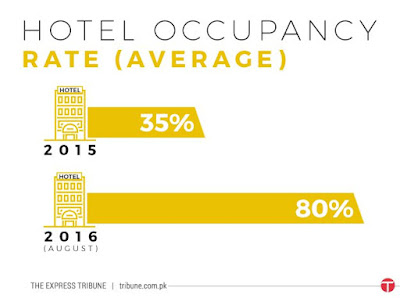

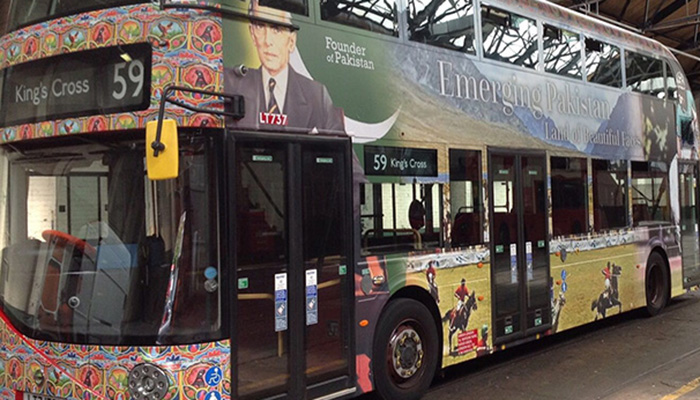
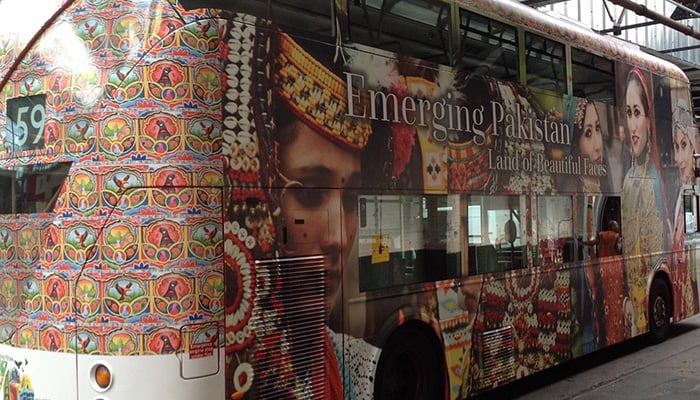
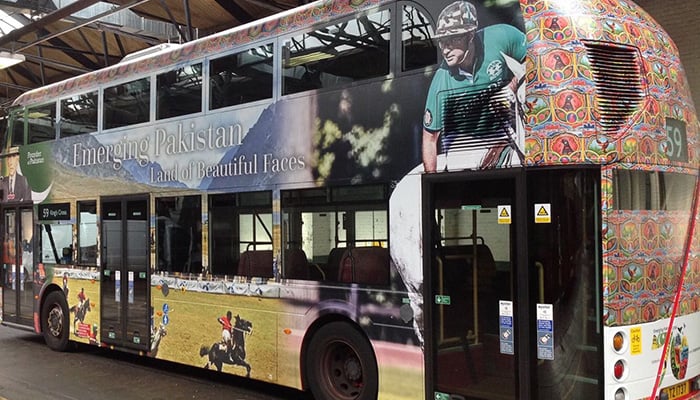
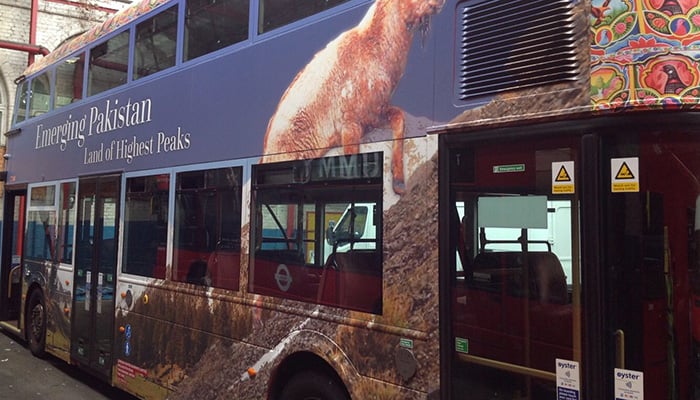
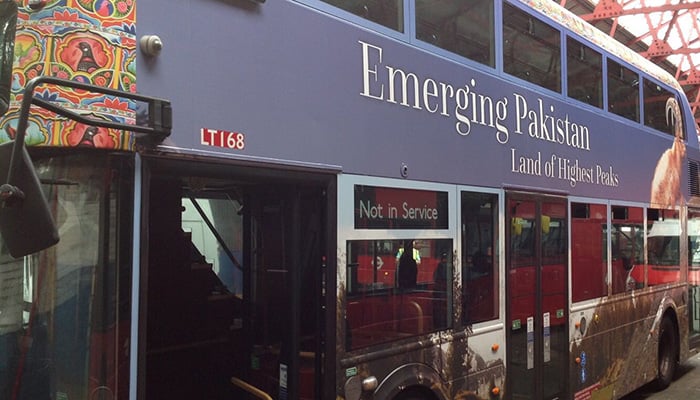
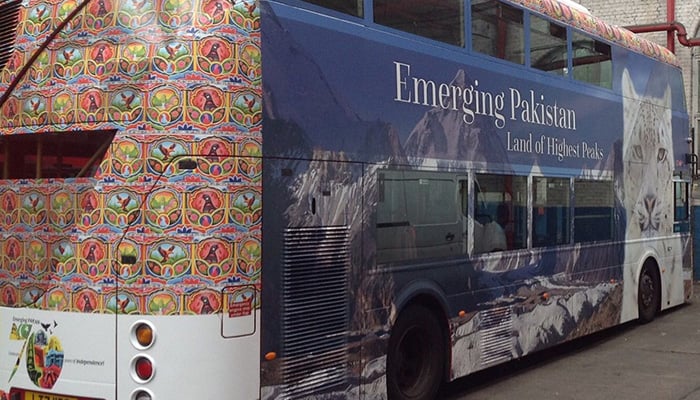
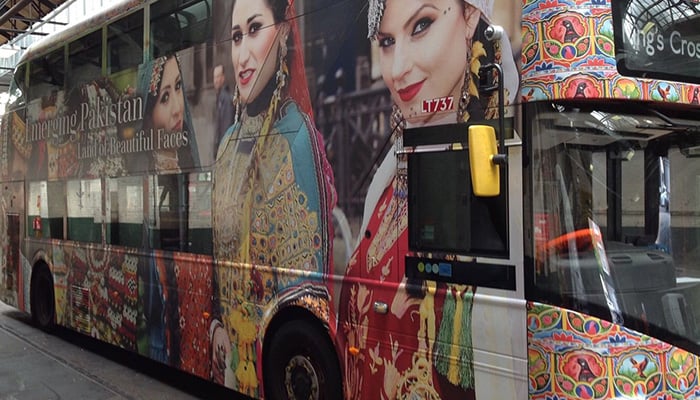
You need to be a member of PakAlumni Worldwide: The Global Social Network to add comments!
Join PakAlumni Worldwide: The Global Social Network